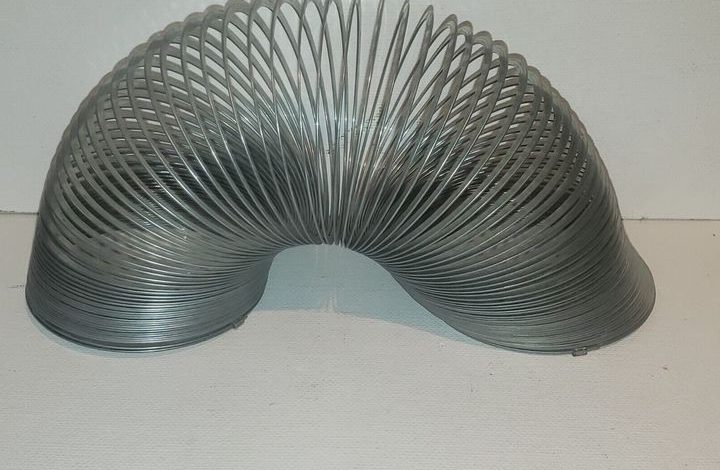
ADVERTISEMENT
The Enduring Fascination of the Slinky: A Timeless Toy
The image of a Slinky evokes fond memories of childhood and playful moments. This simple yet captivating toy has been a source of entertainment and wonder for generations. Let’s explore the history, mechanics, and lasting appeal of the Slinky, a classic toy that continues to enchant people of all ages.
The Birth of the Slinky
ADVERTISEMENT
The Slinky was invented by Richard James, a naval engineer, in 1943. While working on a project to create springs that could stabilize sensitive instruments on ships, James accidentally knocked one of the springs off a shelf. To his surprise, the spring “walked” across the floor. This unexpected behavior sparked the idea for the Slinky.
James and his wife Betty developed the idea further, and in 1945, they introduced the Slinky at Gimbels Department Store in Philadelphia. Priced at $1, the toy sold out its entire stock of 400 units in just 90 minutes, marking the beginning of the Slinky’s commercial success.
How the Slinky Works
The Slinky is a pre-compressed helical spring made from steel or plastic. Its ability to “walk” down steps and perform various tricks is due to its unique design and the principles of physics. When the Slinky is set in motion, gravity and momentum work together to create its characteristic movements.
1. **Walking Down Stairs**: When placed on the edge of a step, the Slinky flips over itself, transferring its potential energy into kinetic energy, allowing it to “walk” down each step in a continuous motion.
2. **Oscillation and Wave Propagation**: The Slinky can also demonstrate wave propagation, where it moves back and forth, creating oscillating waves along its length.
ADVERTISEMENT
The Slinky’s Appeal
The Slinky’s enduring popularity can be attributed to several factors:
– **Simplicity**: Its straightforward design and operation make it accessible and easy to use for all ages.
– **Versatility**: Beyond walking down stairs, the Slinky can perform a variety of tricks, from flipping and juggling to creating mesmerizing shapes.
– **Educational Value**: The Slinky is often used in educational settings to demonstrate principles of physics, such as wave motion, gravity, and energy transfer.
– **Nostalgia**: For many, the Slinky is a nostalgic reminder of childhood, evoking memories of simpler times and playful moments.
The Slinky in Popular Culture
The Slinky’s influence extends beyond the realm of toys. It has appeared in movies, TV shows, and commercials, becoming a cultural icon. One of the most memorable moments is its appearance in the 1995 film “Toy Story,” where the character Slinky Dog, based on the toy, became a beloved character.
ADVERTISEMENT
Modern Innovations
While the original metal Slinky remains a classic, modern versions have introduced new materials and designs. Plastic Slinkys come in various colors and sizes, adding a new dimension to the toy’s appeal. Additionally, larger and smaller versions cater to different age groups and preferences.
Conclusion
The Slinky is more than just a toy; it is a symbol of ingenuity, simplicity, and timeless fun. Its unique design and captivating movements have made it a beloved classic for over seven decades. As we celebrate the enduring charm of the Slinky, we are reminded of the joy and wonder that simple, well-designed toys can bring to our lives.
—
ADVERTISEMENT
Key Takeaways:
– The Slinky was invented by Richard James in 1943 and became an instant success when introduced in 1945.
– Its ability to “walk” down stairs and perform tricks is due to its helical spring design and principles of physics.
– The Slinky’s appeal lies in its simplicity, versatility, educational value, and nostalgic charm.
– It has become a cultural icon, appearing in movies, TV shows, and commercials.
– Modern versions of the Slinky include plastic variants in various colors and sizes, adding to its enduring popularity.




